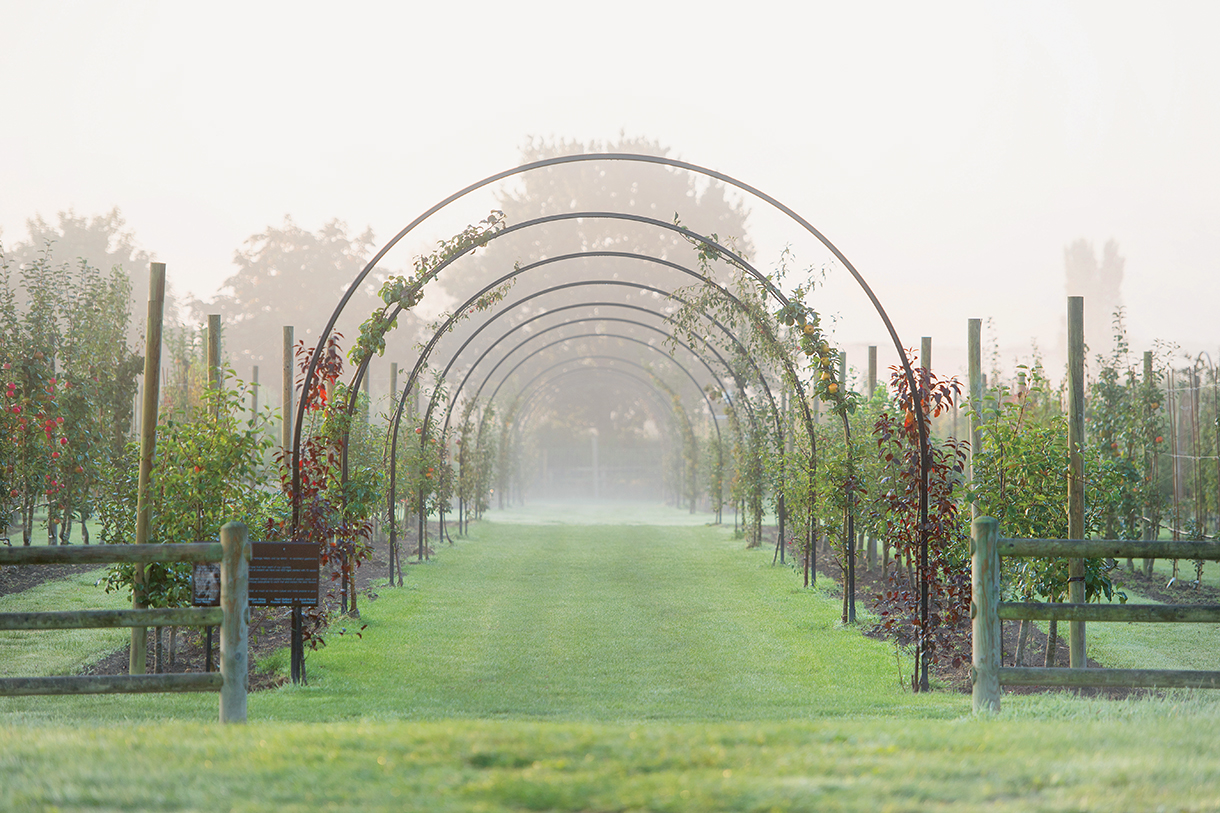
Beautifully landscaped hotel properties with exceptional gardens
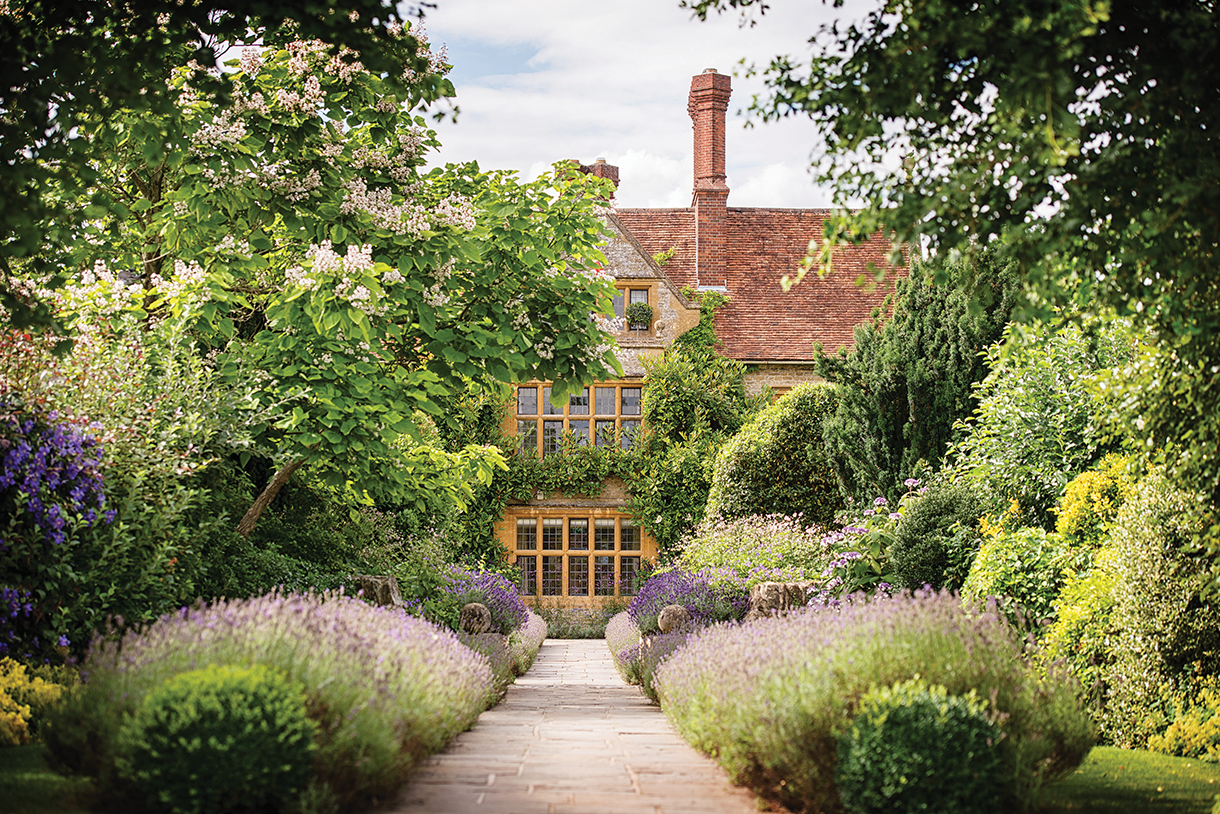
Oxford, England
Hotel Property: Le Manoir aux Quat’Saisons, A Belmond Hotel, Oxfordshire, belmond.com
Scope of Gardens: Nearly 30 acres
Highlights: 11 distinct gardens: vegetable and herb, Japanese, English, wildflower, ornamental, heritage; plus a micro leaf “tunnel,” wild mushroom valley, and orchards
Peak Times: April through September
“You will spend as much time in the garden as you will at the table,” says Anne-Marie Owens, head gardener at this 15th-century manor house in the Oxfordshire countryside. Developed over 40 years (since 1984) and the vision of chef-patron Raymond Blanc OBE, the property specializes in, as Owens says, “garden gastronomy” and “soil-to-plate” Michelin-starred dining. Blanc has established a cooking and gardening school on property for guests, offering courses from $340 per person. When asked about his favorite spot at Le Manoir, he responds enthusiastically, “The unexpected orchard! Over the past 10 years, my team and I have planted an orchard of 2,500 trees.” Combining English- and French-style orchards has yielded apples, pears, apricots, and mirabelles (plums) “that my father and grandfather grew, and my grandmother and Maman Blanc cooked, bottled, and preserved to feed our family.” Blanc is also proud to keep “a zero-landfill policy.”
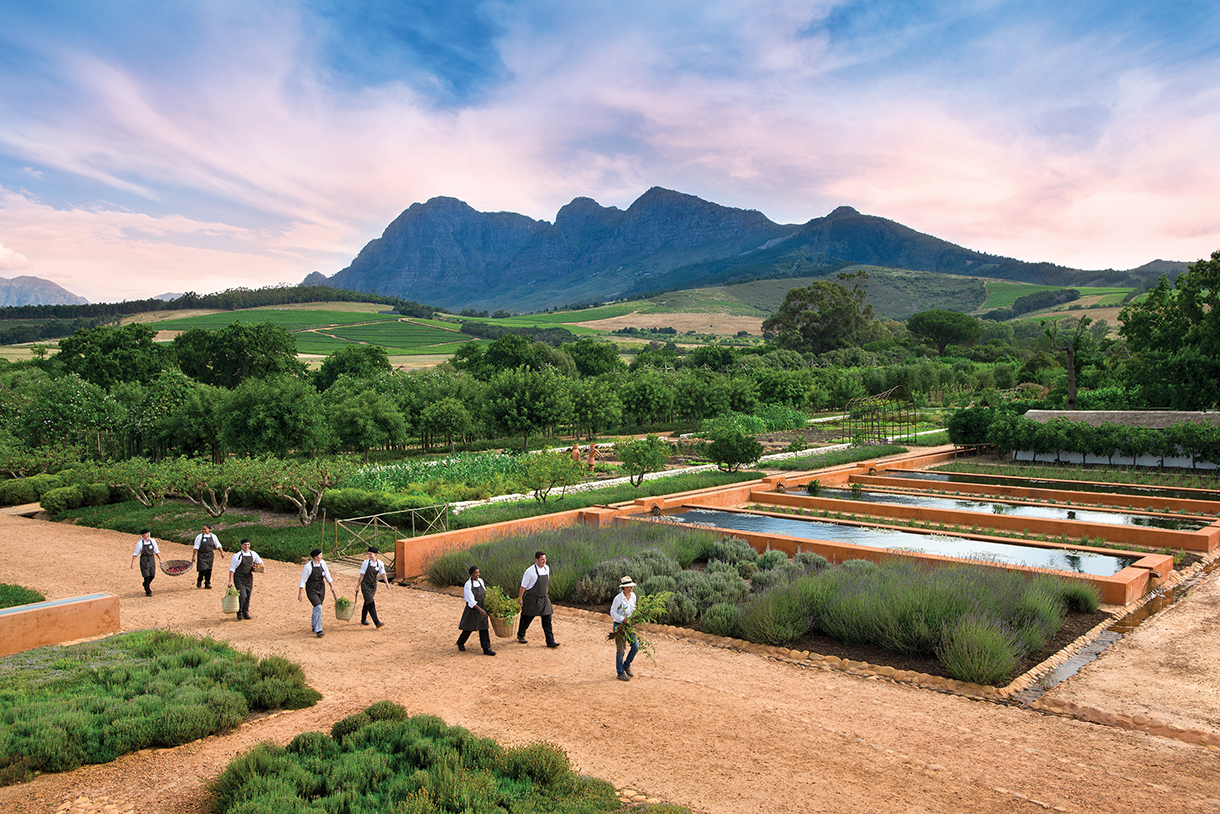
Simondium, South Africa
Hotel Property: Babylonstoren, babylonstoren.com
Scope of Gardens: About 8 acres, plus a 2,450-acre working farm
Highlights: A fynbos biome (shrubby, drought-resistant plants like tree aloe), a cycad collection, a culinary garden, a healing garden, orchards, vineyards, rose pavilions, mass clivia plantings, the Succulent House, the Spice House, the Greenhouse
Peak Times: Year-round
“You come here to get food for your belly,” says master gardener Gundula Deutschlander. “But you also get food for your soul. As you walk along, you are eating, tasting, smelling.” The property excels in plant collections, some very rare (there are cycads that have grown since prehistoric times, for instance), and a cluster of restaurants serve food harvested from the farm by some 600 workers. Everything is edible or medicinal. “If there’s anything pretty, it has a function,” Deutschlander says. Among innumerable activities and workshop offerings, visitors can collect eggs from the henhouse, take garden tours or a beekeeping class, learn to make healing plant medicinals, and prune fruit trees. “We have a fabulous climate, so things hardly go to sleep,” she says. “It depends whether you want to see the fynbos, eat figs, or see clivias in bloom. I think people should come four times a year!”
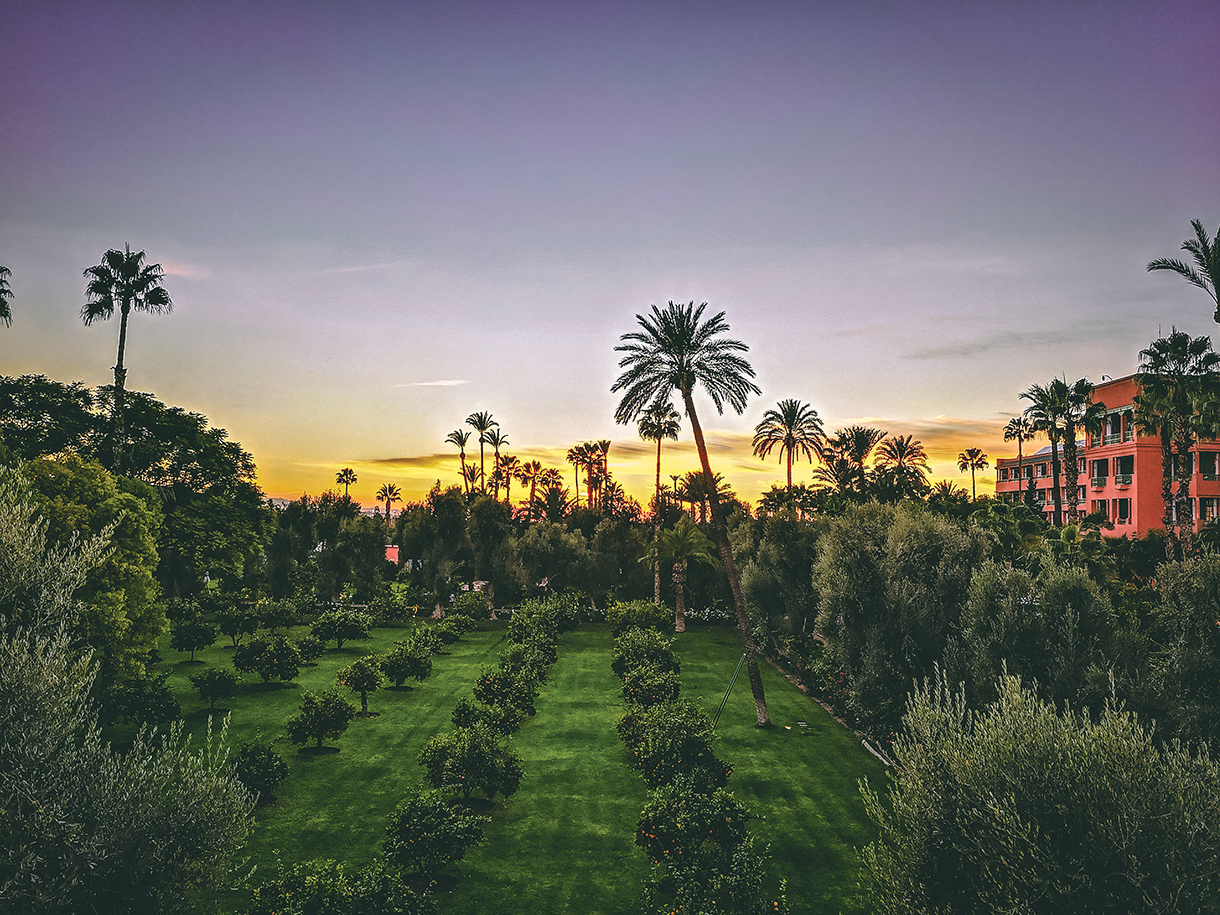
Marrakech, Morocco
Hotel Property: La Mamounia, mamounia.com
Scope of Gardens:
17 acres
Highlights: 160-square-foot vegetable and herb garden, trees (groves of citrus and olive trees, some of the latter said to be 300 years old), grand esplanades of over 20 varieties of cacti and palm trees, views of the Atlas Mountains and Koutoubia Mosque
Peak Times: Spring and fall
The 12th-century walls of this ravishing private garden park shelter a modern Eden. In the 1700s, the sultan Mohammed Ben Abdallah gave the orchard to his son as a wedding gift. Many remarkable people have strolled the graveled paths since, through the oasis of dense plantings. These have included Charlie Chaplin, Alfred Hitchcock, Francis Ford Coppola, FDR, and Charles de Gaulle. Arguably, however, La Mamounia’s most famous guest was Winston Churchill, who went there often to paint the gardens from various balcony vantage points so he could capture the hypnotic, ever-shifting Marrakech light. The garden is not just a visual delight, but an immersive sensory experience. The air is perfumed with roses; herbs such as verbena, mint, and oregano; jasmine; and the tangy scents of lemon and orange blossoms. Babbling fountains lend a calm rhythm to the sounds of birds, as the chaos and hustle of the city feels farther and farther away.
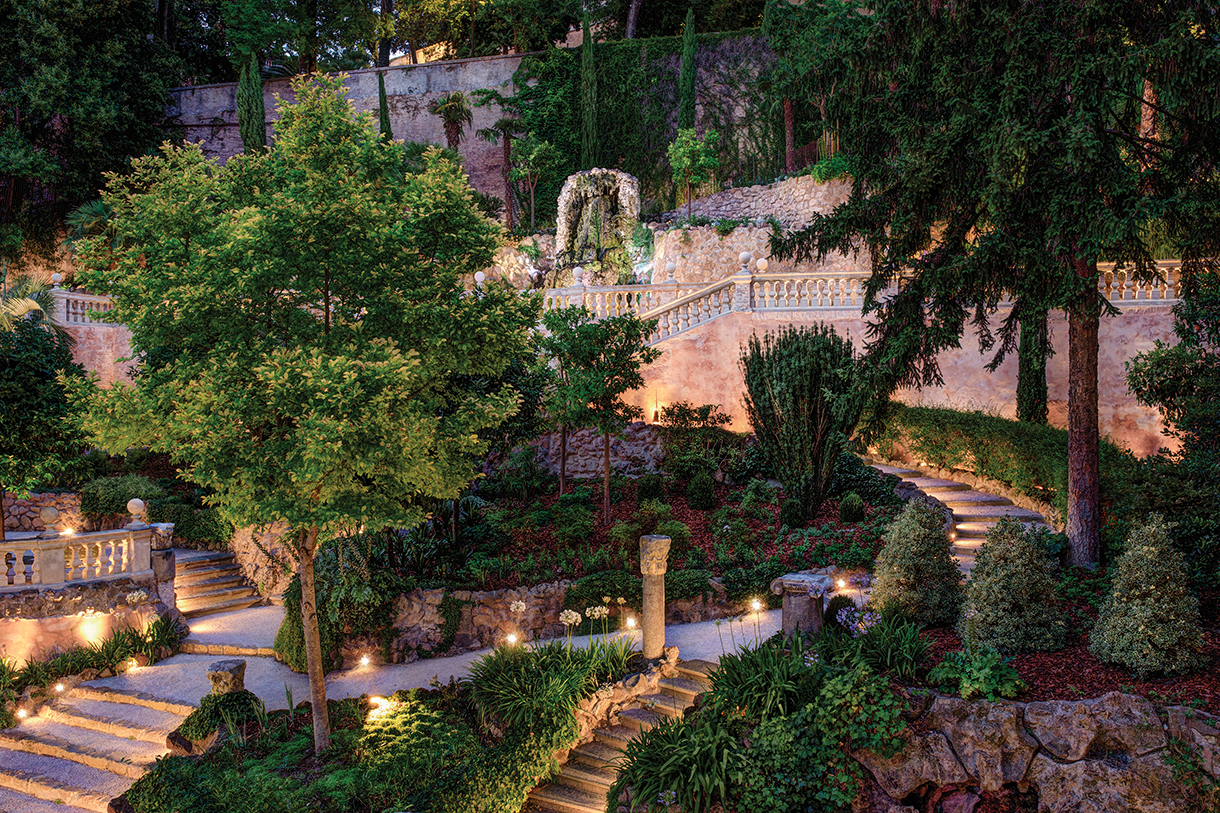
Rome, Italy
Hotel Property: Hotel de Russie, roccofortehotels.com
Scope of Gardens: Nearly 0.7 acres
Highlights: Formal Italian garden with a central axis and neoclassical architectural components (terraces, balustrades, grottos, basins, fountains, and statues), fragrant and colorful plantings, views of the Piazza del Popolo and Pincian Hill
Peak Times: April through November
In the 20th century, French poet Jean Cocteau called Hotel de Russie—the buildings and garden of which were conceived in the 1800s by architect Giuseppe Valadier—“paradise on Earth.” Standing today amid the elegantly terraced Secret Garden and listening to the trickle of fountains, you can see why. A 2021 garden renovation based on Valadier’s plans has reintroduced its original splendor. Anna Grinici, the hotel brand’s regional director of sales and marketing, calls the result “a spectacular, perfectly preserved monument” and points out that Valadier used the space as a kind of template for developing the surrounding Pincian Hill slope. Indeed, a 1981 historical document produced by the city cites the hotel as “a work of art” and a “cultural heritage, architectural, and environmental resource.” The name “de Russie” comes from its association with many guests from the Russian Imperial House, as well as Russian intellectuals and Romantic painters, all of whom, along with Pablo Picasso and Jean Cocteau, strolled the Secret Garden for inspiration and leisure.
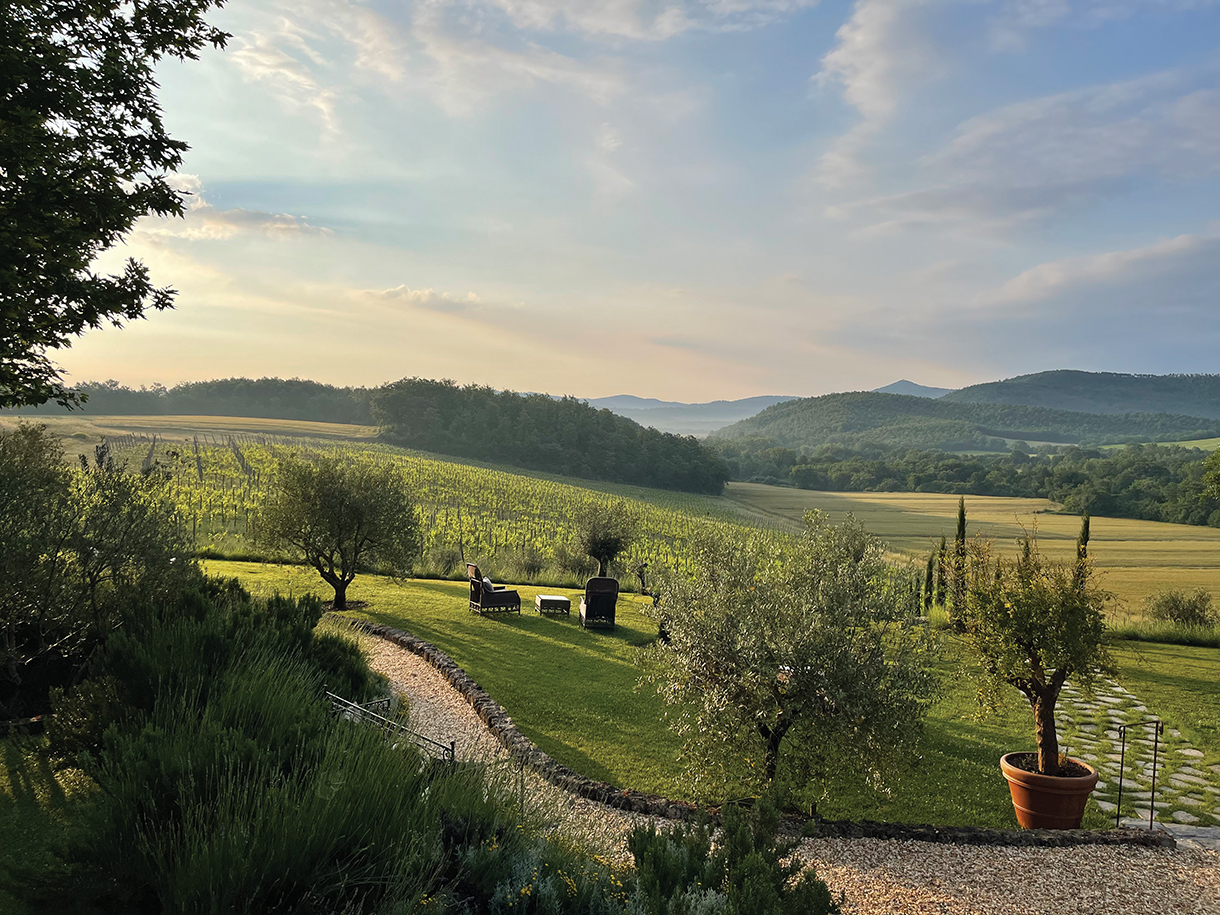
Chiusdino, Italy
Hotel Property: Borgo Santo Pietro, borgosantopietro.com
Scope of Gardens: 13 among a 300-acre farm estate
Highlights: Rose garden, lemon garden, relaxing garden, water garden, herb and water gardens, formal terrace and courtyard garden, forests leading down to the River Merse
Peak Times: Spring and fall
From derelict medieval villa to boutique hotel and farm estate—that is the modern trajectory of Tuscany’s Borgo Santo Pietro, which was restored and planted by Danish couple Jeanette and Claus Thottrup in 2001. Together with head gardener Izudin “Giustino” Mazic, they oversee the preservation, development, cultivation, and harvest of the Borgo’s extensive gardens. Various garden tours are available to guests, including a new Seed to Skin offering that reveals the processes behind the skincare products made on the premises. “I love the rose garden,” says Jeanette. “It’s like a little universe on its own with the sound of water everywhere and the scent of roses. I always imagine myself sitting reading a book there.” Another favorite scent, she says, is melissa (lemon balm). “The herb is calming and uplifting at the same time, and our Divine cleanse is perfumed with these golden drops. The subtle lemony scent is like a drug for me.”
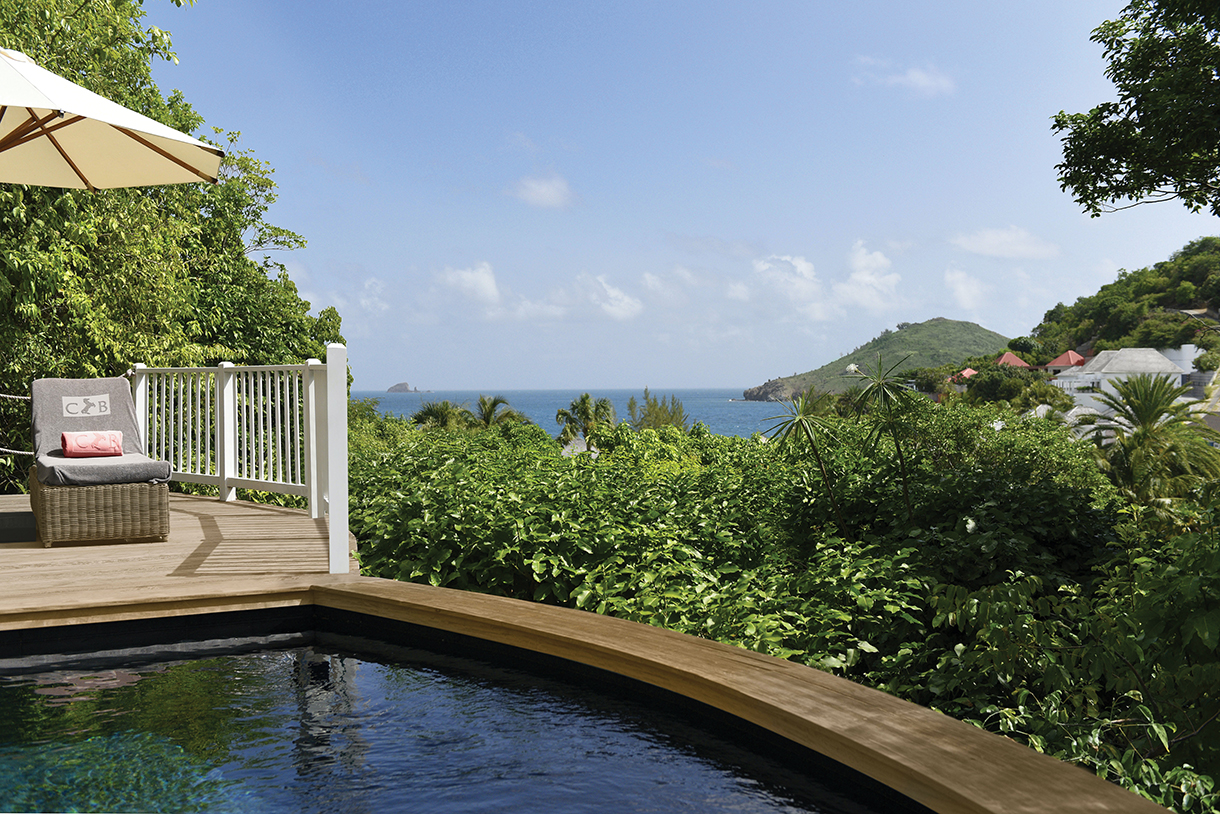
St. Barthélemy, West Indies
Hotel Property: Cheval Blanc St. Barth, chevalblanc.com
Scope of Gardens: 17 acres
Highlights: Boardwalks that traverse dense plantings of fruit trees, bougainvillea, and many types of palms; colonies of iguanas, exotic birds, and turtles; quiet clearings for rest and contemplation; hiking paths leading up a lush hillside
Peak Times: Late November through February
“The most notable thing about the garden at Cheval Blanc St. Barth Isle de France,” says the award-winning landscape designer Madison Cox, “is its unique layout, which was inspired by the concept of connection—connecting the island’s sweeping greenery with the ocean. The maison’s paths, therefore, are imagined to create that connection for guests through winding tropical paths filled with native species of plants and trees. Every turn leads to a new discovery.” Indeed, hotel guests weave in and out of views of the pristine Flamands Beach and stumble across sculptures at crossroads, such as Jean-Michel Othoniel’s The Constellation of Pegasus, made of entwining strands of blown-glass spheres that move in the breeze. Cox’s favorite moment, “a peaceful spa garden, with the centerpiece being a tropical pavilion,” appears out of the dense jungle-like environment. The garden, a collaboration with Manhattan-based landscape firm Garden 26, is meticulously maintained by head gardener Alain Bernard. In-depth tours by request.
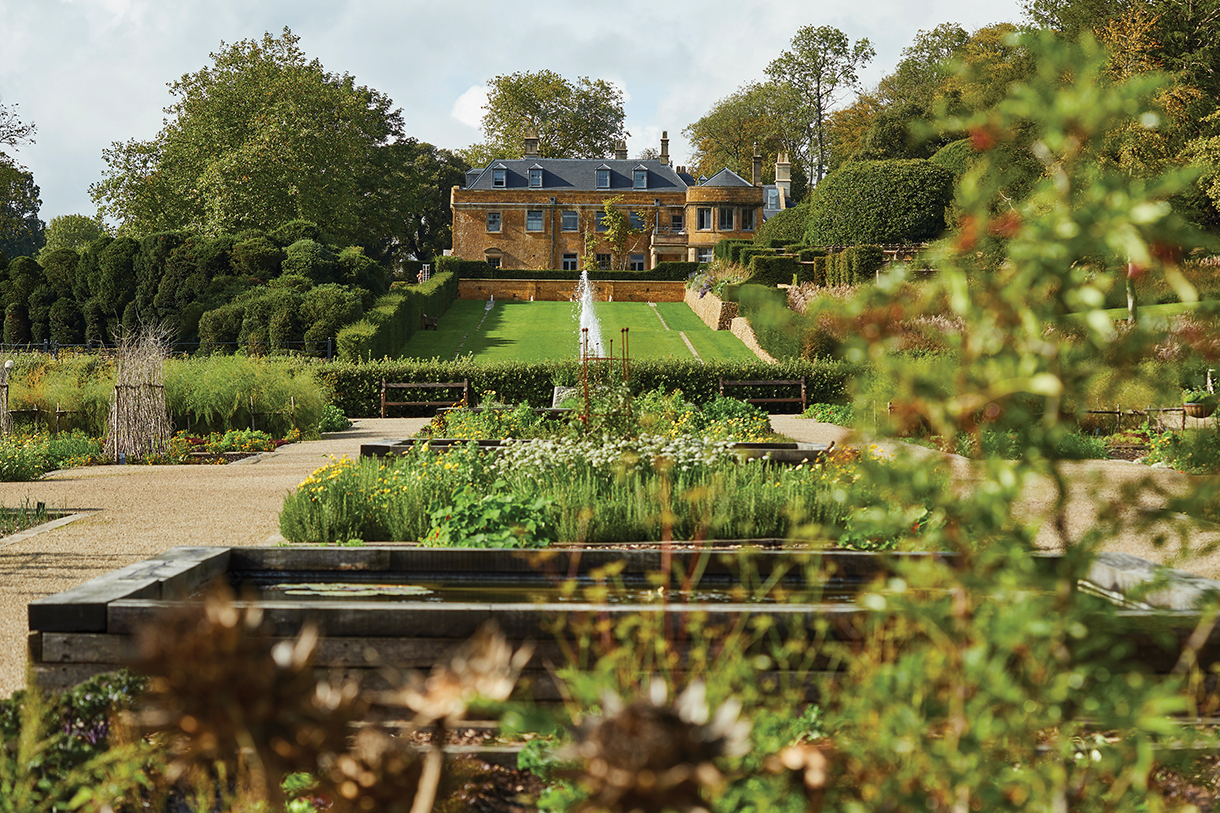
Somerset, England
Hotel Property: The Newt in Somerset, thenewtinsomerset.com
Scope of Gardens: Throughout the 1,000-acre estate
Highlights: Parabola Garden, Woodland Garden and The Grotto, cottage and villa gardens, culinary garden, winter garden, intensive educational program for guests and members
Peak Times: April through September
The founders of The Newt, parts of which sit atop a 351 A.D. Roman settlement, were determined “to produce a unique country estate with formal gardens, but in a way different from so many other gardens in England,” says Head Gardener Stephen Herrington. First planted in 1690 and expanded by subsequent generations of gardeners, the site today offers tours and workshops for both guests and members (who number an astonishing 35,000). Member fees get you garden access year-round and a steady stream of educational workshops. Guests are automatic members but also have exclusive access to the hotel gardens as well as all others after public hours. One of Herrington’s favorites is the Roman Villa Garden. “It’s planted only with plants that would have been in the United Kingdom in 350 A.D.” Constantly evolving, the gardens recently added plantings of 250,000 snowdrops, a Japanese garden, a grotto in the woodland, and expanded plant collections.
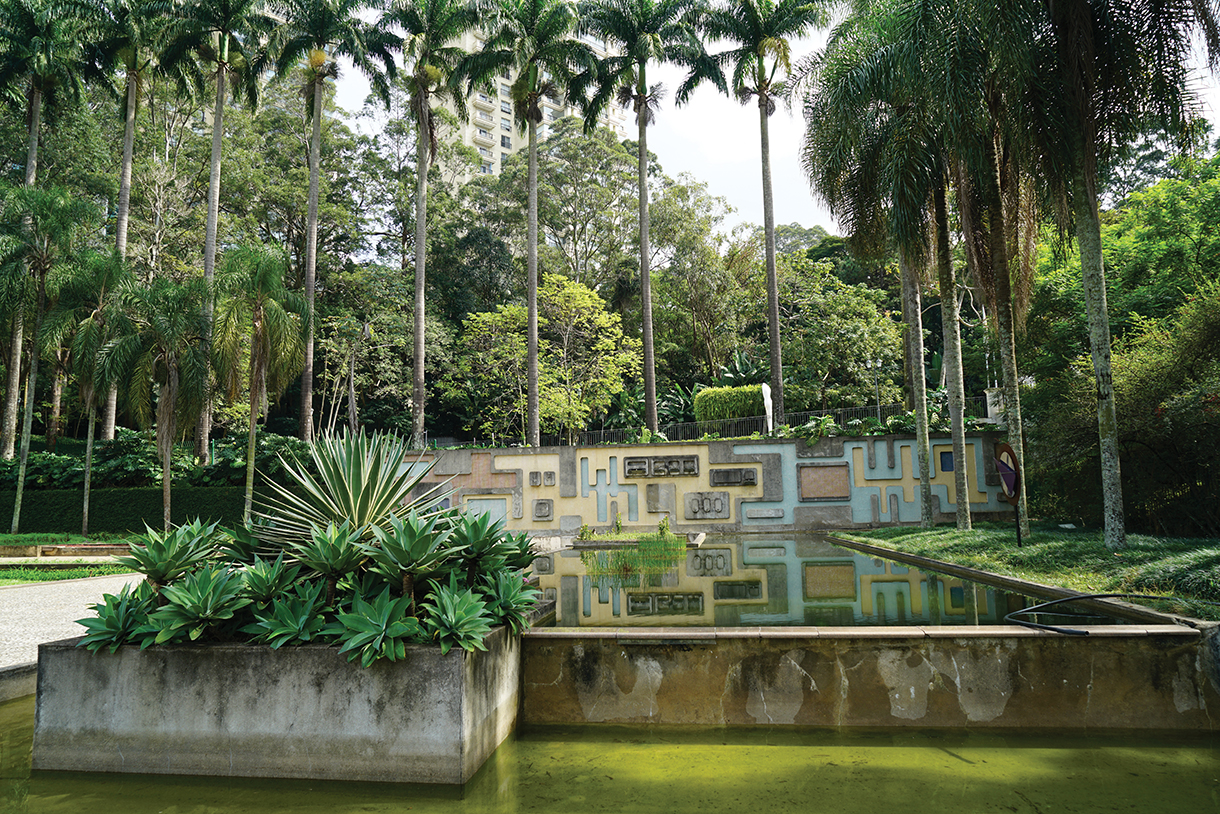
São Paulo, Brazil
Hotel Property: Palácio Tangará, oetkercollection.com
Scope of Gardens: 26 acres, including the adjacent Parque Burle Marx
Highlights: The hotel gardens and the park’s fountains and ponds, wooded trails, checkered lawns with reflecting pools, outdoor sculptures, allées of royal palms, community gardens, recreation areas
Peak Times: Year-round
The hotel stands on what was once a sprawling residence designed in the 1940s by Pritzker Prize–winning architect Oscar Niemeyer for the wife of a famed Brazilian industrialist. The project (encompassing surrounding gardens designed by legendary landscape architect Roberto Burle Marx) was abandoned after the businessman’s scandalous love affair with actress and Princess Ira von Fürstenberg shattered his marriage. In 1990, the city engaged landscape architect Rosa Glena Kliass to finish what Burle Marx had started and update the vision within her own master plan. The result is an enormous municipal park sporting hundreds of plant varieties and wildlife (marmosets, coatis, toucans, and parrots). Around the hotel, landscape designer Sergio Santana created an “elegant garden that makes the transition between the hotel’s architecture and the native Mata Atlântica (Atlantic Forest) of the Burle Marx Park that surrounds it.” Hotel gardens are exclusive to guests, but the park is open to everyone and well worth a visit.




